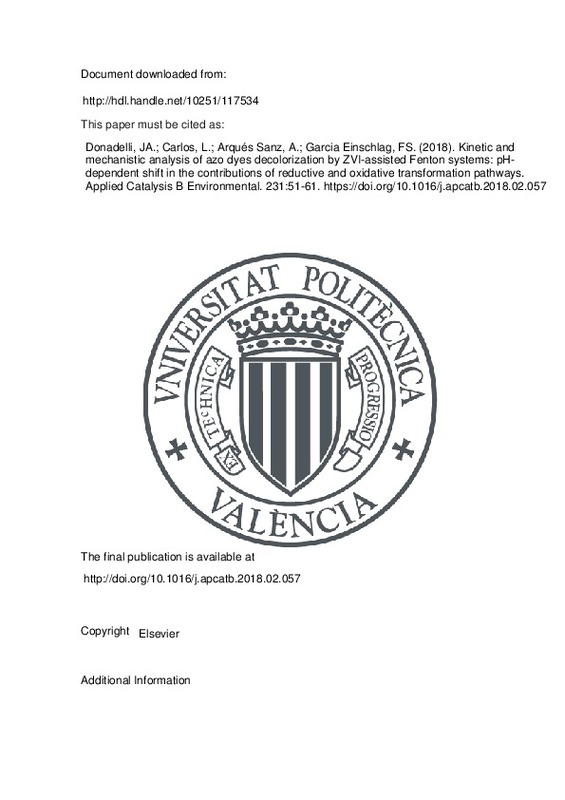JavaScript is disabled for your browser. Some features of this site may not work without it.
Buscar en RiuNet
Listar
Mi cuenta
Estadísticas
Ayuda RiuNet
Admin. UPV
Kinetic and mechanistic analysis of azo dyes decolorization by ZVI-assisted Fenton systems: pH-dependent shift in the contributions of reductive and oxidative transformation pathways
Mostrar el registro completo del ítem
Donadelli, JA.; Carlos, L.; Arqués Sanz, A.; Garcia Einschlag, FS. (2018). Kinetic and mechanistic analysis of azo dyes decolorization by ZVI-assisted Fenton systems: pH-dependent shift in the contributions of reductive and oxidative transformation pathways. Applied Catalysis B Environmental. 231:51-61. https://doi.org/10.1016/j.apcatb.2018.02.057
Por favor, use este identificador para citar o enlazar este ítem: http://hdl.handle.net/10251/117534
Ficheros en el ítem
Metadatos del ítem
| Título: | Kinetic and mechanistic analysis of azo dyes decolorization by ZVI-assisted Fenton systems: pH-dependent shift in the contributions of reductive and oxidative transformation pathways | |
| Autor: | Donadelli, Jorge A. Carlos, Luciano Garcia Einschlag, Fernando S. | |
| Entidad UPV: |
|
|
| Fecha difusión: |
|
|
| Resumen: |
[EN] The chemical decolorization of the azo-dye Acid Black 1 (AB1) by ZVI-assisted Fenton systems was investigated for assessing the relative importance of reductive and oxidative pathways. To this end, system evolution ...[+]
|
|
| Palabras clave: |
|
|
| Derechos de uso: | Reconocimiento - No comercial - Sin obra derivada (by-nc-nd) | |
| Fuente: |
|
|
| DOI: |
|
|
| Editorial: |
|
|
| Versión del editor: | http://doi.org/10.1016/j.apcatb.2018.02.057 | |
| Código del Proyecto: |
...[+] |
|
| Agradecimientos: |
The present work was partially supported by UNLP (11/X679), ANPCyT (PICT-2012-0423, PICT-2015-0374) and CONICET (PIP: 12-2013-01-00236CO). Authors also want to acknowledge the economic support of European Union Call: ...[+]
|
|
| Tipo: |
|







![[Cerrado]](/themes/UPV/images/candado.png)


